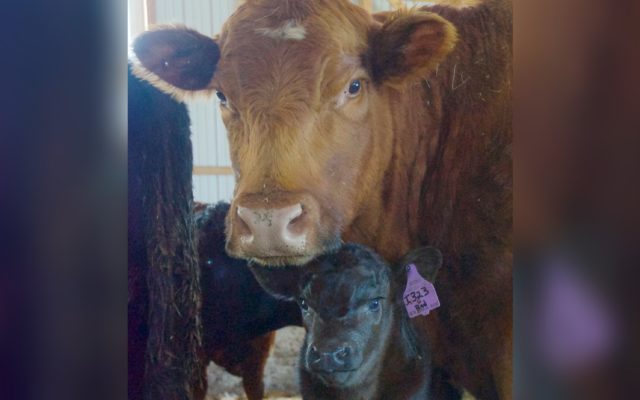
How contact tracing is used to fight disease outbreaks on farms
Since the beginning of the COVID-19 pandemic, contact tracing has played a big part in controlling the spread of the virus. Public health officials use contact tracing to track the movements of people infected with the virus and anyone they have exposed. But contact tracing isn’t something new. In fact, it’s regularly used to control the spread of diseases in livestock.
Contact tracing in livestock has been part of successful biosecurity strategies for years, according to Donna Coffin, a professor with the University of Maine Cooperative Extension Service.
“This is how we track if there is a disease outbreak,” said Dr. Michele Walsh, Maine state veterinarian with the Maine Department of Agriculture, Conservation and Forestry. “You go to the animal you know is infected and ask its owner where it came from and did it mix with other animals along the way.”
It’s not about Big Brother
The U.S. Department of Agriculture mandates any livestock or poultry moving across state lines for sale or for showing must have an official identification tag and a health certificate issued by a veterinarian.
If an animal that crosses state lines turns out to be sick, information on where that animal originated and where it came into contact with other animals as it traveled is crucial. It allows veterinarians to do what they have long called trace-back, which is the same thing as contact tracing. It goes a long way in helping control and stop the spread of livestock diseases.
Historically in Maine, not every farmer has been on board with that level of information sharing, according to Coffin. Fearing a “big brother” type interference on their farms, some have refused to tag or otherwise provide information about their livestock.
“I attended a meeting in 2007 which advocated the premise of ID tags on livestock and one of the farmers was so against it he threw a whip-cream pie in the face of a speaker,” Coffin said. “There were farmers there who did not want anyone to even know where their farms were.”
Maine does not require ID tags for animals destined for markets within the state. It does strongly urge farmers to tag their livestock with identification information Coffin said.
“Contact tracing protects the livestock industry as a whole,” Coffin said. “If an animal is reported to have a disease we can trace where it came from and alert people all along the way.”
State and federal involvement
State or federal animal health officials may get involved with livestock on a farm if expertise is needed to identify a disease or to conduct any investigation into the animal’s origins and movements. The more transparent the farmer is about an animal’s history, the easier it is to deal with a potential health threat.
“Our boots on the ground are the veterinarians who see these animals on the farms and can look at one and say, ‘Huh, this looks like one of those scary diseases I learned about in vet school,’” Walsh said. “That vet can get the animal’s history from the farmer and work with the farmer to isolate that sick animal.”
Beyond that, Walsh said it comes down to education and outreach.
“We spend the bulk of our time figuring out good ways to educate the public on what normal looks like and what abnormal looks like with their livestock,” Walsh said. “We also work with farmers on what to do if something looks off.”
In October, the Maine Department of Agriculture, Conservation and Forestry with the University of Maine Cooperative
Extension is offering a series of free webinars on creating a contact tracing program for livestock diseases. The sessions will look at the basics of biosecurity, recommended record-keeping methods, animal identification systems and what happens if there is an actual livestock disease event.
“We want our farmers to have a solid biosecurity plan for their animals,” Coffin said. “This helps protect the farmer and the livestock industry as a whole.”
Trust is key
Most of all, Walsh hopes farmers come away confident they can call on Maine’s animal health officials if they have questions or suspect they have a diseased animal. The earlier veterinarians and officials can get a look at that animal and start any needed contact tracing, the better, Walsh said.
“Farmers need to be transparent with us if they suspect an outbreak and we want them to feel OK about contacting us so we can limit any spread,” Walsh said. “Otherwise you are going to have us marching onto your farm in the Tyvek suits and none of us want that.”
Register for the webinars on creating a contact tracing program for livestock diseases at https://extension.umaine.edu/piscataquis/animalid.